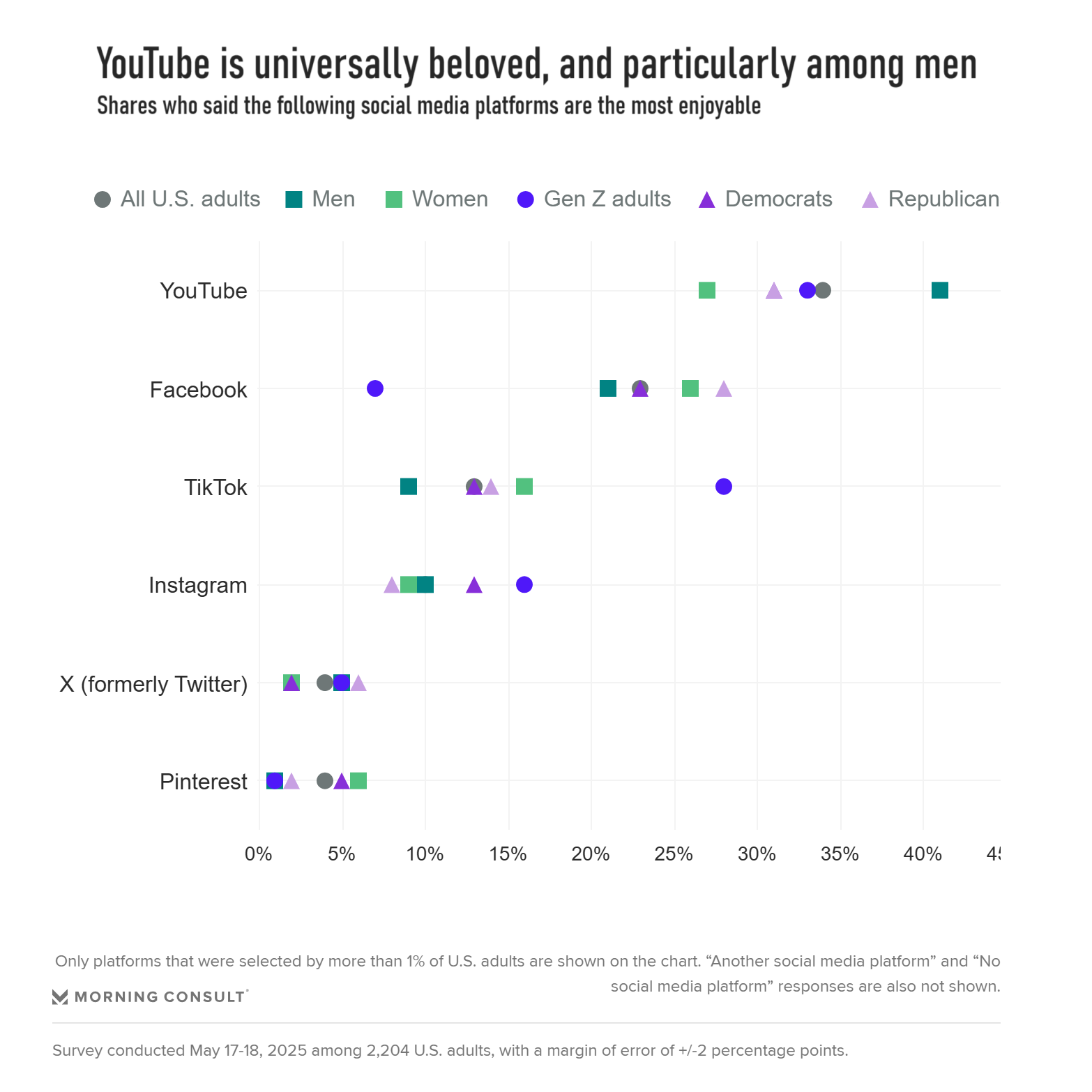A new analysis, conducted by MC, places YouTube comfortably ahead of other social networks when people are asked which they actually enjoy using. About a third of adults chose it, putting the video platform well out in front of Meta’s Facebook, which came in second. TikTok and Instagram followed further down. X, the platform still struggling under its new name after years as Twitter, ended up at the bottom.
A wide base of support
The most striking detail is how even the numbers are across different groups. Men and Generation X users leaned a little higher in favor, but younger people, older groups, and women all gave broadly similar answers. Gen Z and even the youngest users, Gen Alpha, are already on board, keeping YouTube’s reach broad.

Other services showed sharper splits. Facebook’s strength is tied mainly to older users. TikTok scored better with younger women. Instagram sat just behind it. X displayed the clearest divide, with Republicans more likely to rate it enjoyable and Democrats far less so.
Longevity and reach
YouTube turned 20 this year, a rare milestone for a social media brand. It has also changed shape over time. What began as short clips watched on laptops is now content streamed mainly on televisions, making it part of the wider media space rather than only a social feed.
For creators the platform has remained attractive because payouts are reliable, and advertisers continue to follow the audience there. That mix has helped it stay relevant while other networks come and go.
The management approach has also mattered. Alphabet, YouTube’s parent, has kept its leadership largely out of personal controversy. That’s a contrast with rivals, where outspoken chief executives often dominate attention and sometimes damage their own brands.
X falling behind
X showed up most often as the least enjoyable platform. Problems with outages and glitches over the past few years have done it no favors. Since the 2022 takeover, frustrations have grown, and the survey reflects that.
The split here was also political. Democrats were three times more likely than Republicans to put X at the bottom. That gap was far wider than on other platforms, which saw more muted differences.
Fatigue setting in
More than half of respondents described what they see across social platforms as repetitive or dull. Posting activity has already dropped, and the data adds weight to the sense that audiences are tiring of the experience.
That matters for brands. While YouTube still looks strong, companies trying to reach people online may need to spread their bets. Owned channels like newsletters or direct communities are becoming safer spaces, less subject to the shifts in mood that hit the big platforms.
Notes: This post was edited/created using GenAI tools.
Read next: Google Search Still a Reliable Source, But Social Keeps Sliding
